
Here in 5th class we were lucky enough to have a fish tank in our room for a 6 weeks, with lots of different types of sea creatures. We spent the month learning all about the oceans and how we can look after them. This was an opportunity for us to learn lots about water. One of the most exciting things we looked at was water pressure. Pressure is the force that pushes water through pipes. Water pressure determines the flow of water from the tap. Using the strand Energy and Forces we tested how water pressure would be affected as it flowed through various size openings.
What we needed:
• 6 Large 2 Litre bottles of Pepsi
• 5 packets of Mentos
• Geyser tube (to drop in the Mentos)
• Height Chart
• Metre Stick
Fair Test:
To keep the test fair each bottle of Pepsi contained the same amount of liquid and the same number of Mentos would be dropped into each bottle. The only thing to change was the size of the opening at the top of the bottle.
The Question:
Would a smaller opening produce greater or less pressure?
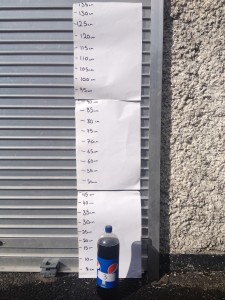
The Experiment:
1. This would be conducted outside in the back yard as we suspected it would be messy…..we we’re right!
2. The Pepsi bottles would have various size openings cut at the top of the bottle. This was done by the teacher as it required sharp scissors.
3. Into each of the opening we dropped 6 Mentos (we discovered this was all we could get in before the reaction.)
4. We measured how high the liquid rose from the bottle to test whether water pressure was greater through a smaller opening or through wider openings.
5. The higher the liquid rose the greater the pressure.
Our Findings:
The Pepsi bottle with the smallest opening produced a height of 72cm. The bottle with the largest opening produced the least pressure and barely rose above the level of the opening at 28cm high. The smaller the opening the greater the pressure that was produced and the higher the liquid rose. We had great fun and were also able to incorparate some maths into our experiment using metres and centimetres to measure the height of the liquid and work out how many times higher each eruption travelled.
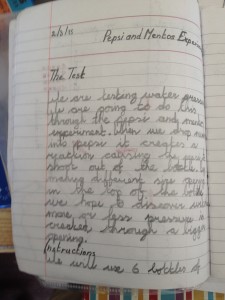
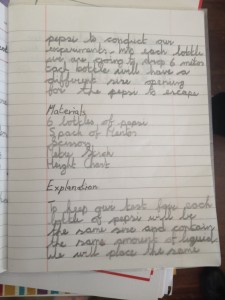
So, Why do the Mentos make the Pepsi erupt?
Although there are a few different theories around about how this experiment works, the most favoured reason is because of the combination of carbon dioxide in the Pepsi and the little dimples found on Mentos sweets.
The thing that makes fizzy drinks bubbly is the carbon dioxide that is pumped in when they bottle the drink at the factory. It doesn’t get released from the liquid until you pour it into a glass and drink it, some also gets released when you open the lid (more if you shake it up beforehand). This means that there is a whole lot of carbon dioxide gas just waiting to escape the liquid in the form of bubbles.
Dropping something into the Pepsi speeds up this process by both breaking the surface tension of the liquid and also allowing bubbles to form on the surface area of the Mentos. Mentos sweets are covered in tiny dimples (a bit like a golf ball), which dramatically increases the surface area and allows a huge amount of bubbles to form.

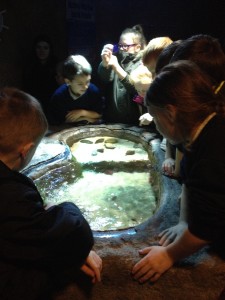

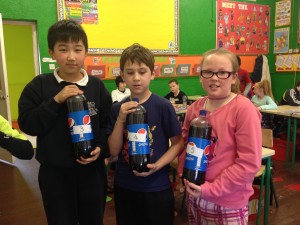
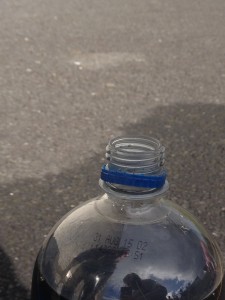
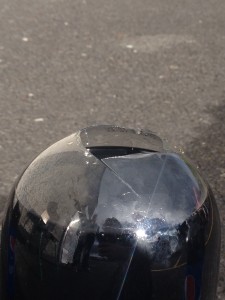

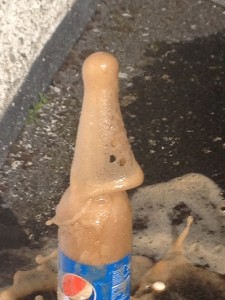







12:44 pm on May 12th, 2015
The exploding Pepsi experiment seems cool!
12:45 pm on May 12th, 2015
Cool! I would love if 4th could do it!